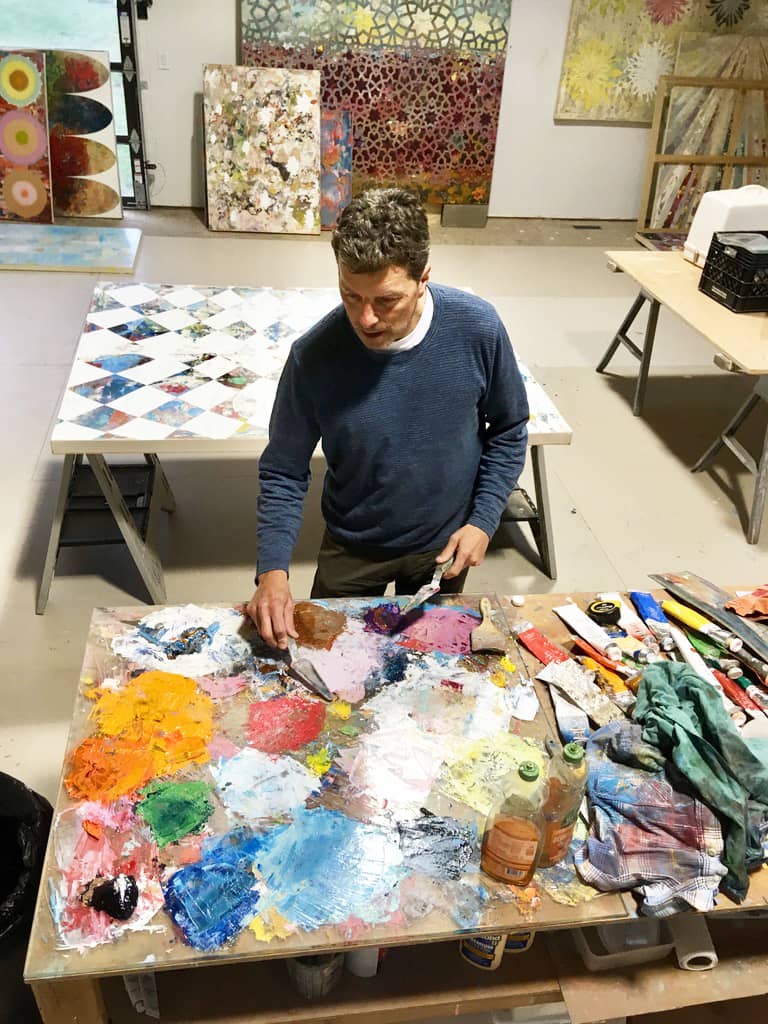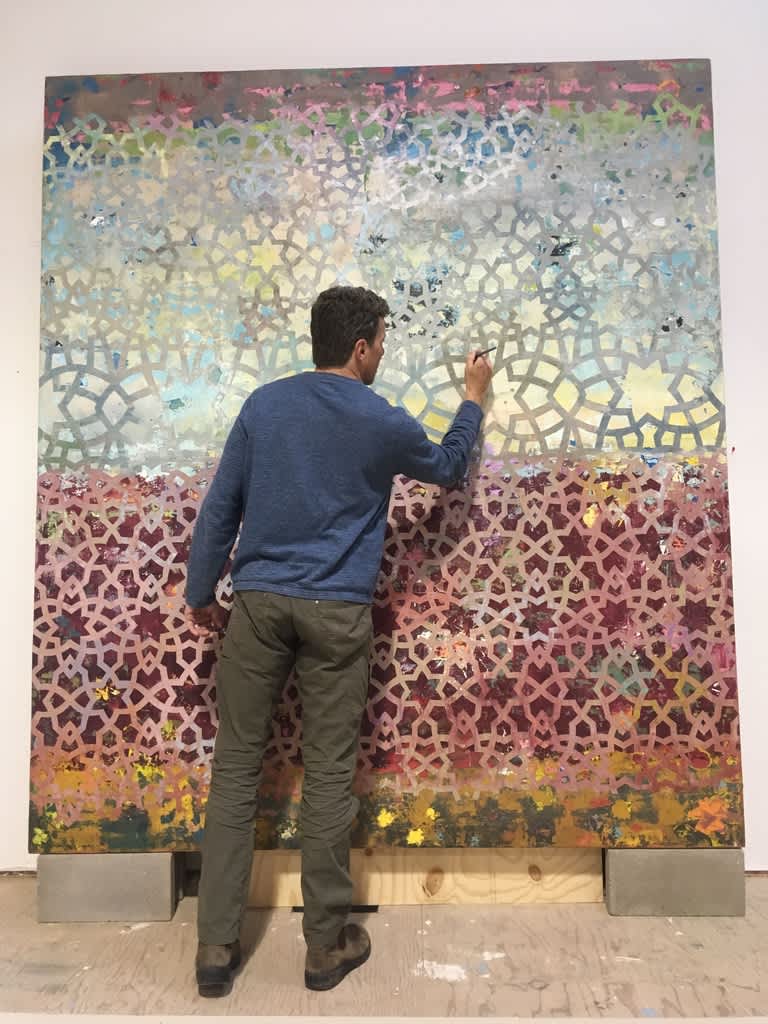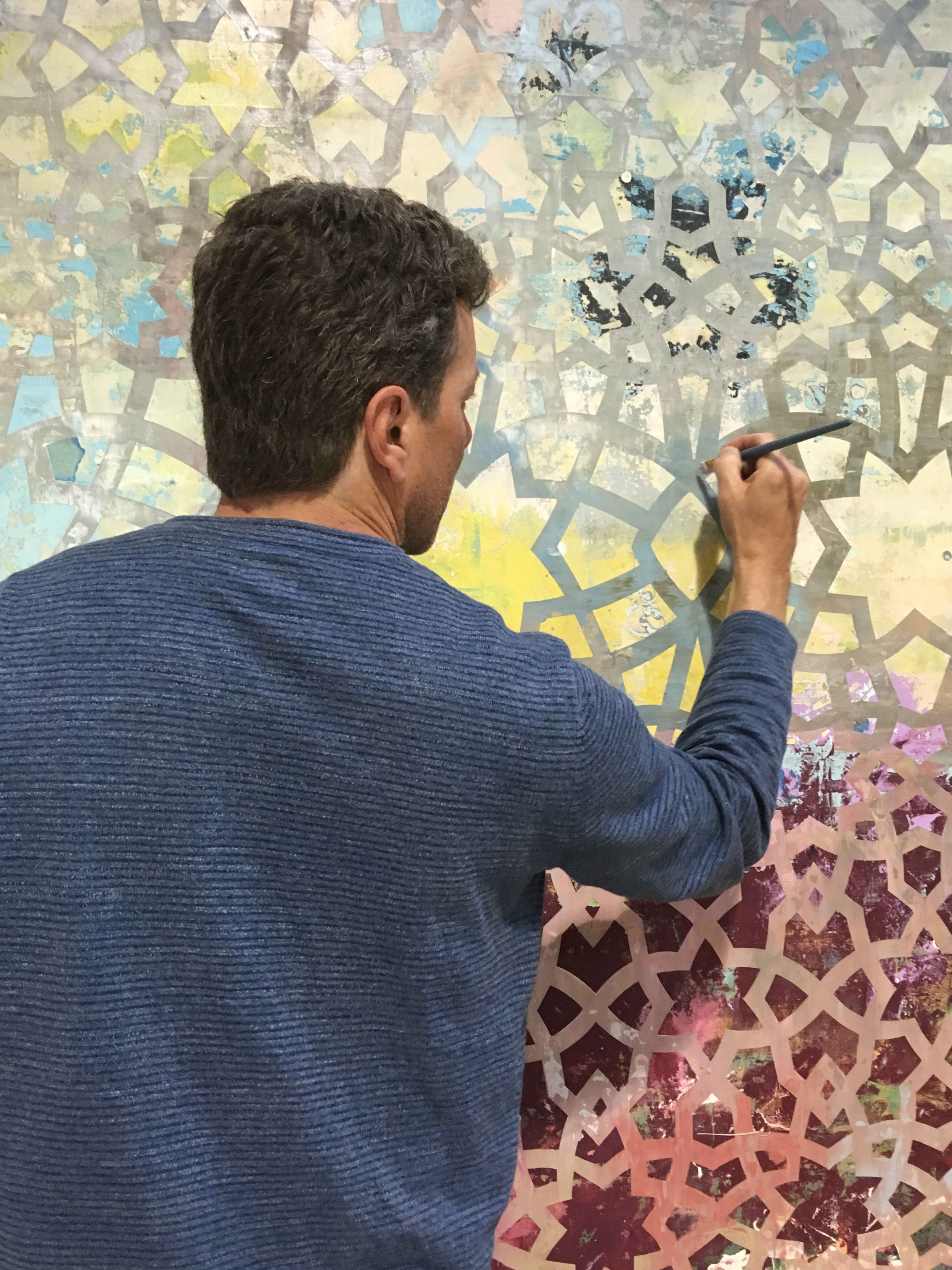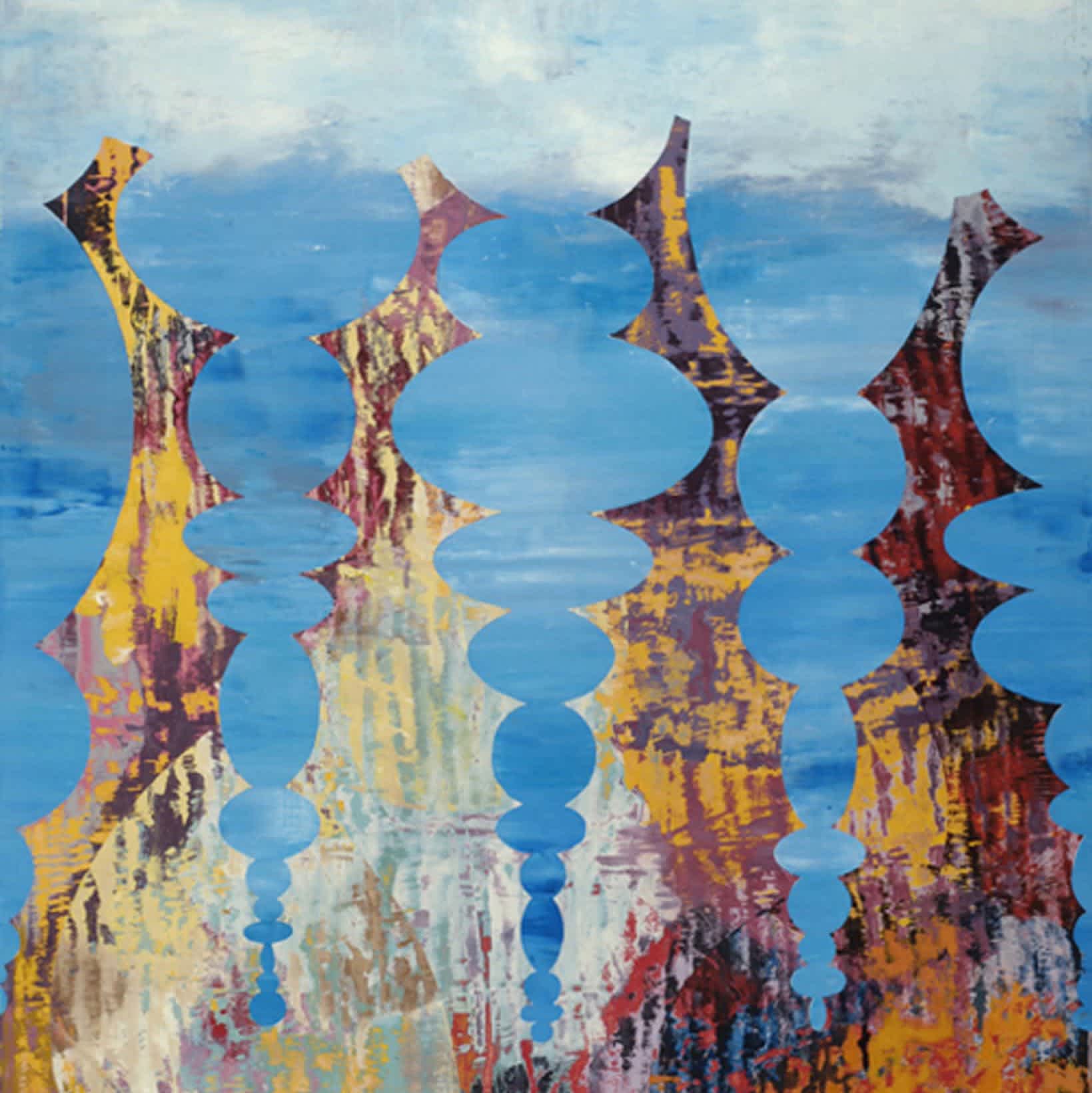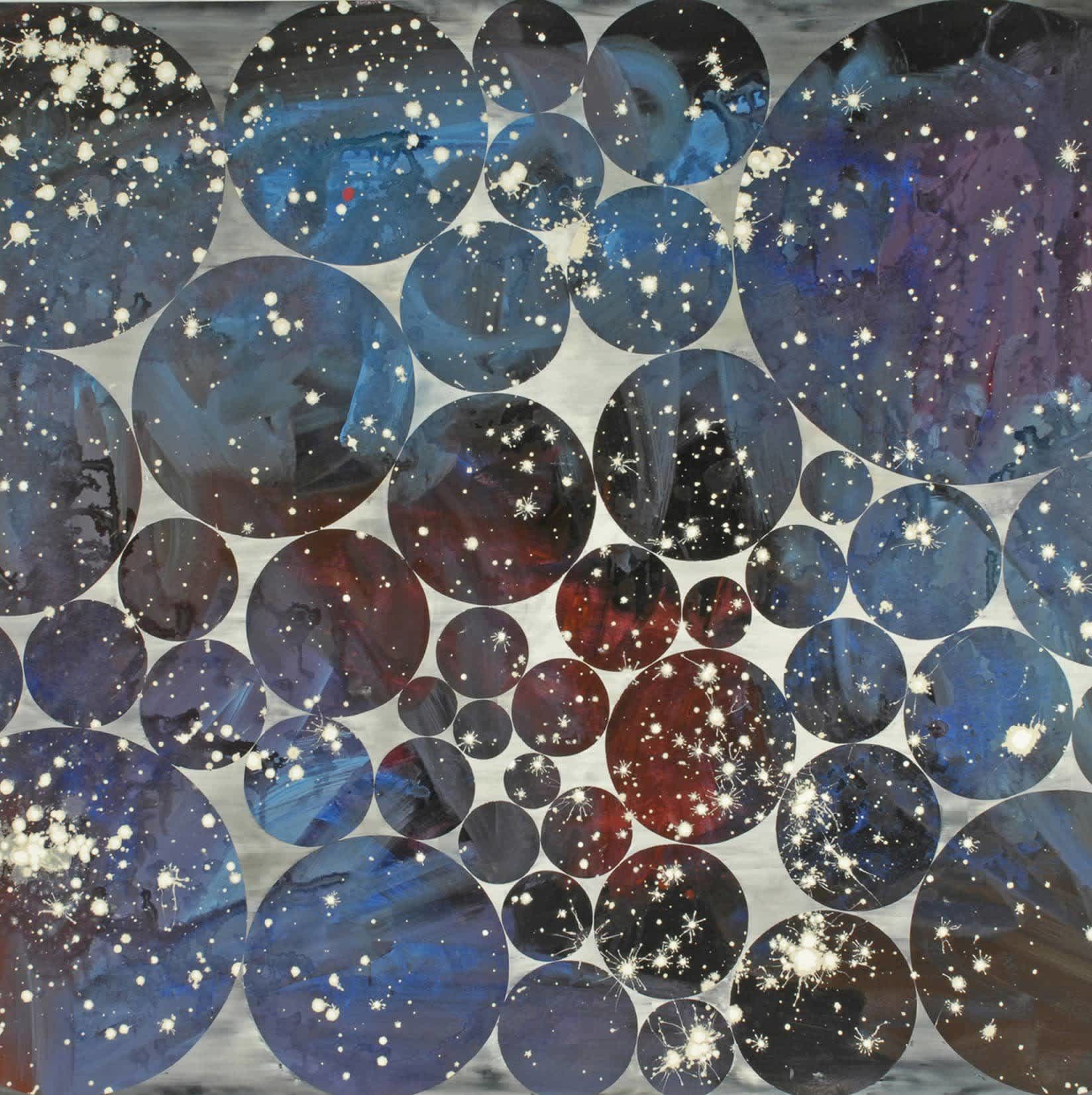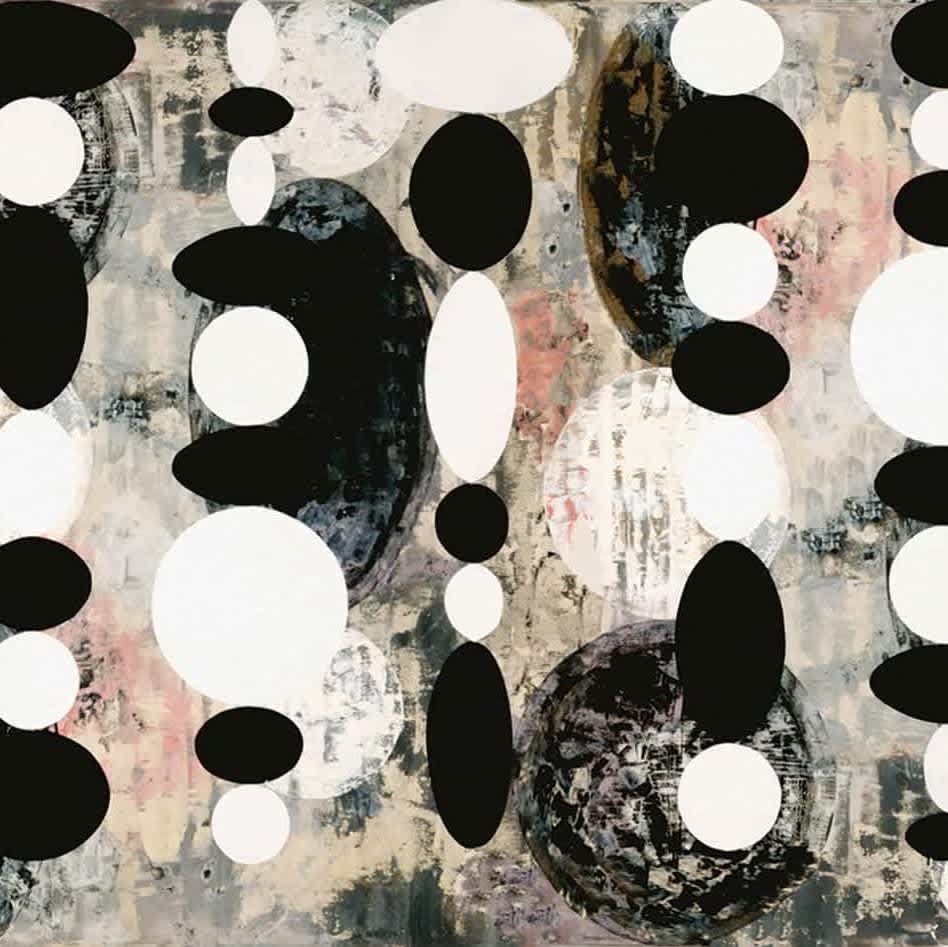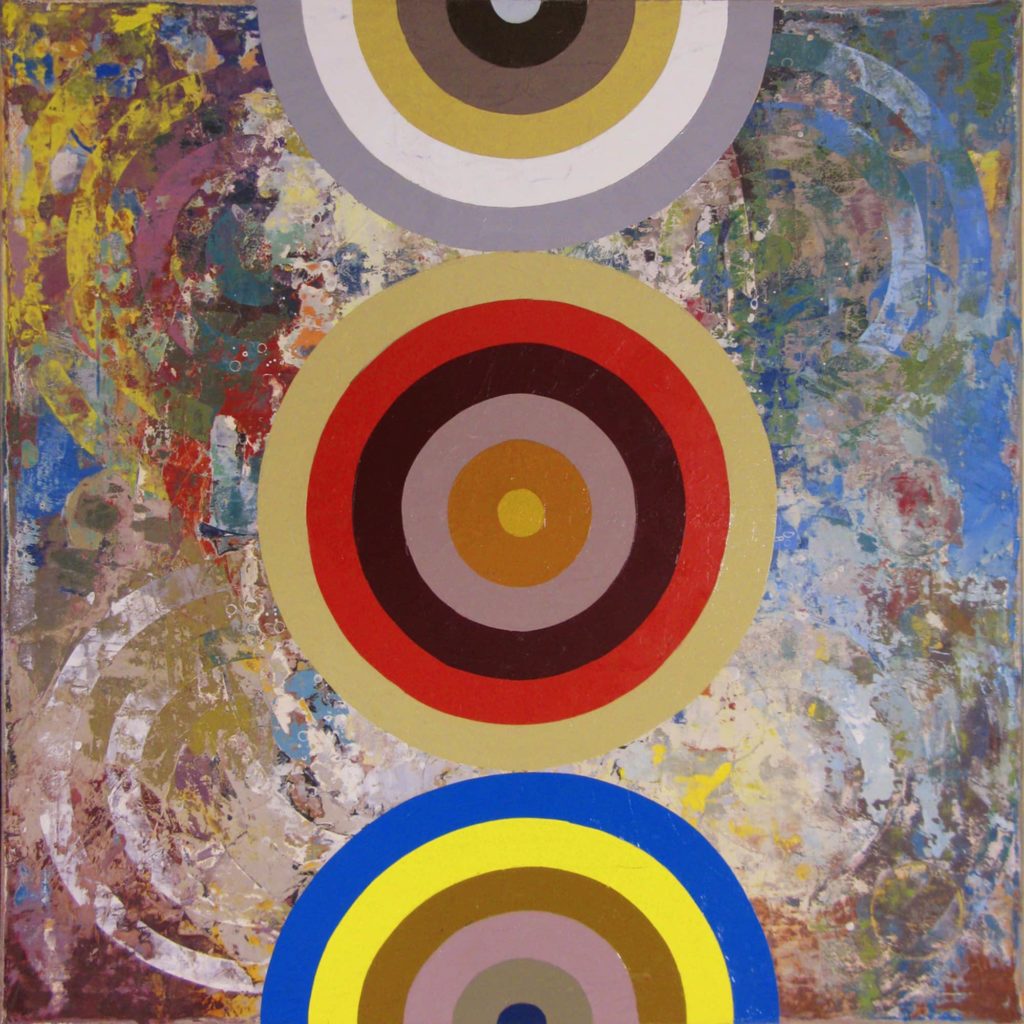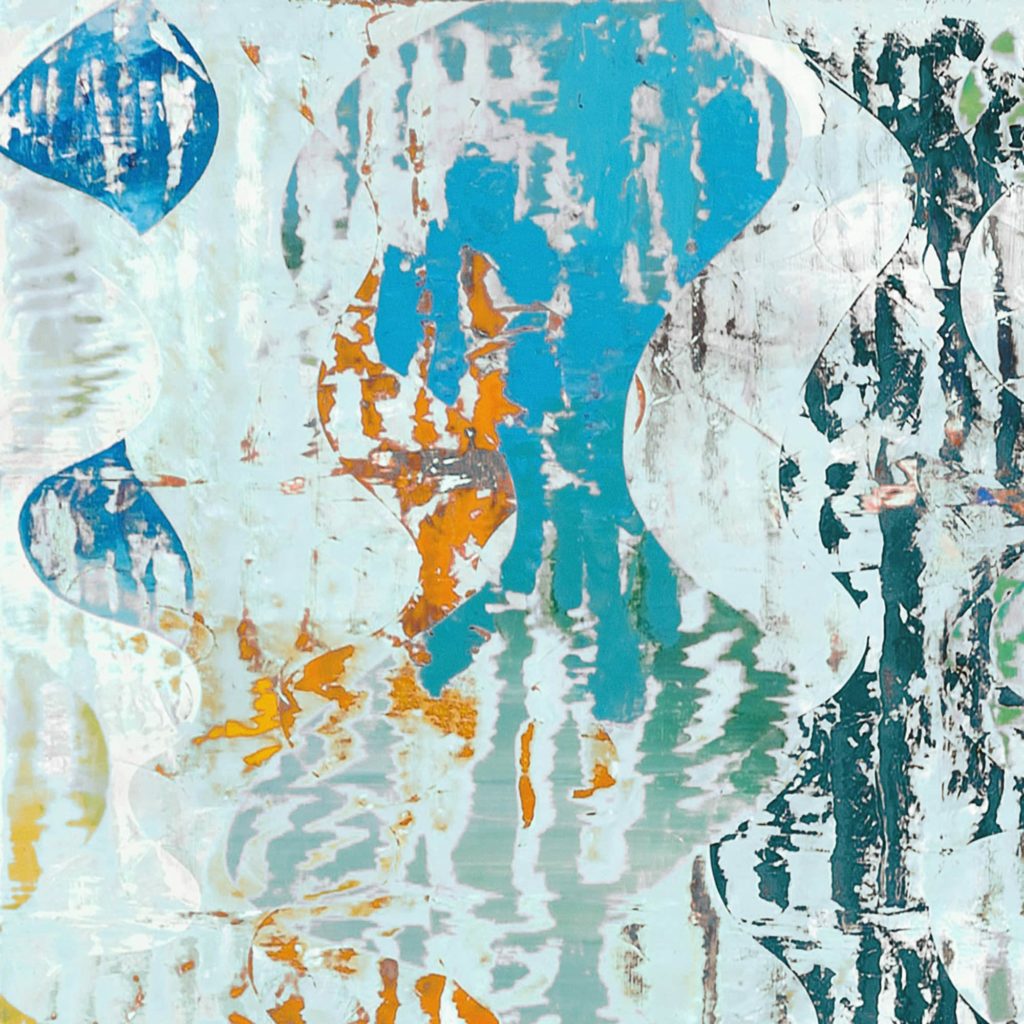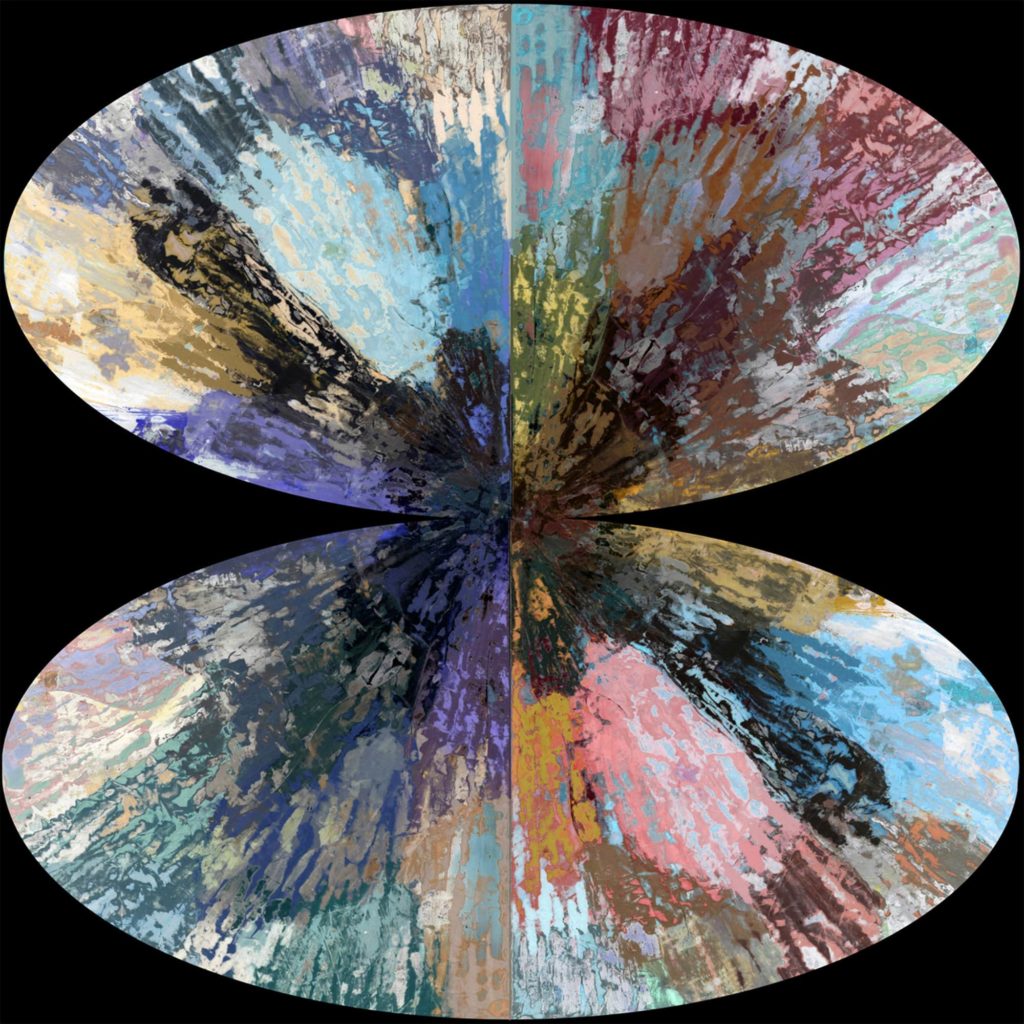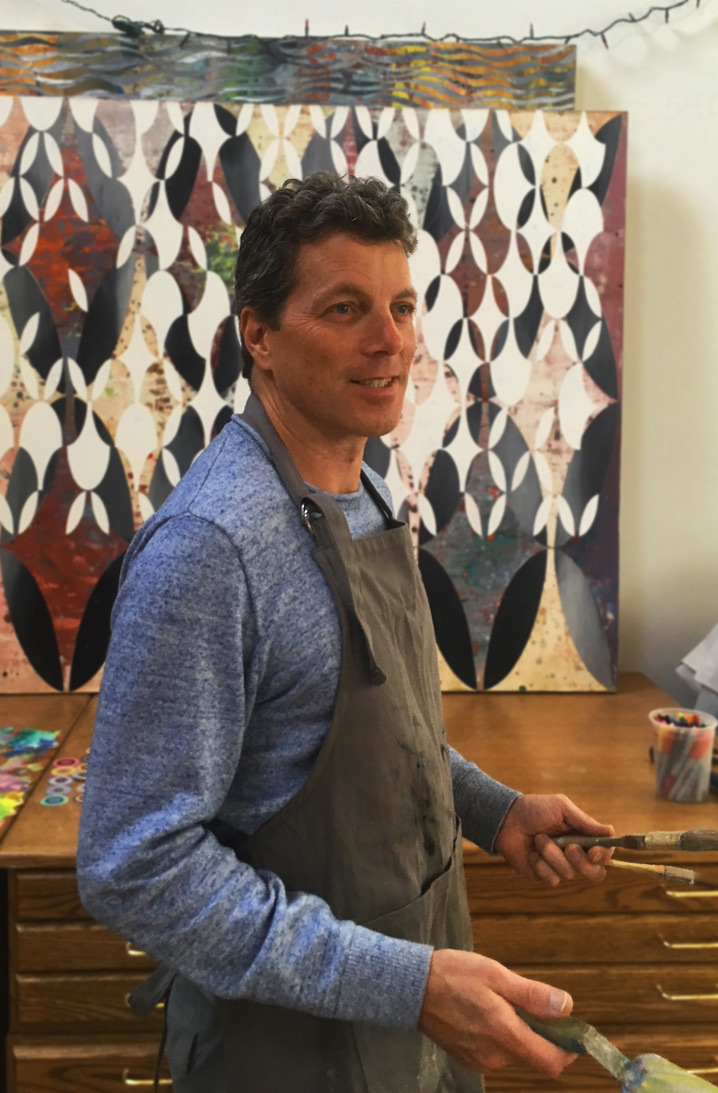
In the Studio with Perry Burns
April 5, 2023
Painter Perry Burns virtually sat down with us to discuss his background as an artist, what inspires his practice and what failure means to him. Deeply influenced by Islamic art, Perry Burns creates vibrant mixed media artwork which blends eastern and western aesthetics. Using a ‘visual language of abstraction – color, shape, line, mark, and texture, Burns merges the traditions of Islamic pattern and abstract expressionism, thereby consciously crossing boundaries of culture, history religion, race, ideology and politics. Burns uses a variety of media and techniques, including oil paint on canvas and monoprints on paper, to create colorful, abstracted patterns and rhythmically repetitive motifs, what he refers to as ‘visual mantras.’ Ultimately, he seeks to convey his impressions of different histories, narratives and experiences and create an experience of perception.
What is your background? Did you always want to be an artist?
A very early experience I had with making art planted a seed, though I didn’t know it at the time. I was 6 years old, in 1st grade, and my class went to the art room in my school. We were asked to do a painting and as I worked, I got so lost in the painting that the next thing I knew, I heard the teacher saying, “Perry… Perry…” and I looked up to see that all the other kids had already cleaned up and left! I had been so consumed in the painting that time literally disappeared, and I entered some other dimension. I thought to myself at that moment, “Wow, what was that?” I realized even then that painting, and the creative process, engages a deep spiritual realm that, when you describe it, may sound hokey, but when you experience it, it’s very real and very moving.
What informs your work?
Another experience I had years later planted yet another seed. When I was 11 years old, living and going to school in Greenwich, CT., my aunt & uncle invited me to Beirut, Lebanon where my uncle was stationed as a naval attaché. He was a very gregarious man and spoke 7 different languages including Arabic and Farsi. He would take me around the neighborhood and I was completely taken by all the sights, sounds and smells. It was soincredible and unlike anything I had ever known. Years later as I became an artist and developed my artwork, Lebanese culture would come to influence much of my artwork on many different levels, the sense of pattern, color and overall feel of the work.
What are you trying to communicate in your work?
Throughout my painting now, I want to communicate the spiritual underpinnings embodied in this physical object. In Arabic artistic tradition and history there exist a lot of patterns: in artwork, in illuminated manuscript painting, on tiles, walls and screens of buildings and mosques. Those artists believed that you should not and cannot depict God in art, but you can depict a path to enlightenment. Thus, the patterns, the repetition of line, shape, and color, are like a visual mantra.
This is exactly how I think about painting. For me, painting is the soul seeking its highest self, an existential search for joy, meaning, understanding, an attempt to freeze a moment of enlightenment. I strive for a painting to be at once ancient and new, forever and fleeting, primal and metaphysical, actual and enigmatic.
For me, the power of painting lies not as much in the reproduction of nature as in the dynamism of visual forces. In my paintings I do not want to merely illustrate an event, I want to create a visual experience. I do not want to reproduce the visible, I want to create an experience of perception. For if vision is “seeing”, then perception is “knowing,” which introduces to the visual experience the spiritual nature of perception. In essence, a painting offers a visual opportunity for “seeing” to become “knowing,” that fully unnamable but universal experience of realization, understanding and connection that lies beyond our will or intention. What is there more than that to enlightenment? It is the power of art to connect us to the essence of our beings.
That is my hope for my paintings, that they offer beyond a moment of delight or insight, an experience of enlightenment, a consciousness of the essence of our shared human experience that our common humanity will reveal itself.
What do you learn from failure?
This is a great question. Since I also teach art to elementary age kids, I recently had a parent ask, “How do you help a child develop grit?” My answer was that you have to let kids fail. Learning has to include the possibility for both success and failure. Children, and all of us, experience failure, so we have to learn that failure can be a good motivator.
For that reason, “failure” to me, especially as an artist, is a misnomer. I don’t believe that failure is really failure, since one learns from everything we do. “Failure” is a necessary part of and, indeed a vital ingredient in learning and thus “success”. Because of this, I always say to the kids I teach, “There are no “mistakes.”
As an example, for every “successful” painting I paint, one that I would show in a gallery, I do at least 5 paintings that are not successful. Failure is just part of the process and anyone who wants to learn, develop, grow and master any subject has to accept that as part of the process. If you look at any example, Michael Jordan, the Wright Brothers, JK Rowling, Abraham Lincoln, all suffered many “failures,” before “success.”

